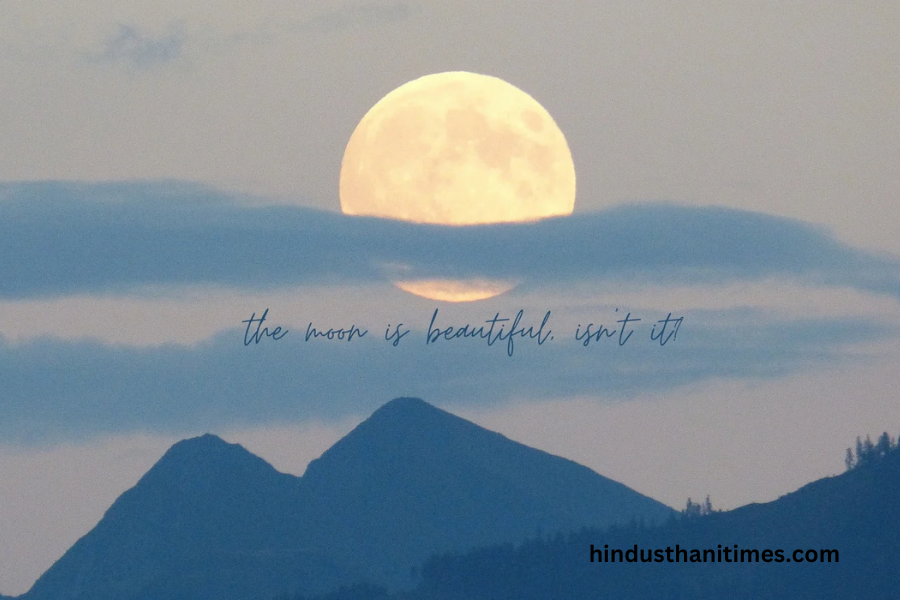The moon has captivated human beings for centuries with its ethereal beauty and mystique. Its mesmerizing presence in the night sky has inspired countless works of art, literature, and music. From ancient civilizations to modern-day science, the moon has held a significant place in human culture. In this article, we will explore the allure of the moon, its significance in different cultures, lunar myths and legends, its impact on tides and nature, moon photography tips and techniques, its portrayal in literature and poetry, moon exploration and missions, scientific facts about the moon, its connection to astrology, and how it serves as a symbol of beauty and inspiration.
The Allure of the Moon
The moon’s radiant glow and gentle presence have long fascinated people around the world. Its silver light casts a spell on the night, creating an atmosphere of tranquility and mystery. Whether it’s a full moon illuminating the landscape or a crescent moon adorning the sky, the moon’s beauty never fails to captivate our hearts.
The Significance of the Moon in Different Cultures
Throughout history, various cultures have attributed deep significance to the moon. In ancient civilizations such as Egypt, the moon was associated with the goddess Isis and was believed to have a direct impact on fertility and agricultural cycles.
In Chinese culture, the moon holds a central place in the Mid-Autumn Festival, symbolizing family unity and harvest. The moon also plays a significant role in Native American folklore, where it is often seen as a protector and guide.
Lunar Myths and Legends
Lunar myths and legends have been passed down through generations, weaving tales of love, adventure, and supernatural beings. In Greek mythology, for example, the moon goddess Selene was said to ride her silver chariot across the night sky, spreading moonlight wherever she went. In Japanese folklore, the story of the Moon Princess tells of a celestial maiden who descended to Earth and brought harmony and beauty to the world.
The Moon’s Impact on Tides and Nature
One of the most tangible effects of the moon’s presence is its influence on tides. The gravitational pull of the moon causes the ocean’s waters to rise and fall, creating the ebb and flow of the tides.
This phenomenon not only affects coastal regions but also plays a crucial role in marine ecosystems. Many species of marine life rely on the predictable cycles of the tides for feeding, reproduction, and migration.
Moon Photography Tips and Techniques
Capturing the moon’s exquisite beauty through photography can be a challenging yet rewarding endeavor. To capture stunning moon photographs, it is essential to consider factors such as the phase of the moon, the surrounding landscape, and the equipment used.
One technique is to use a telephoto lens to zoom in on the moon and capture its intricate details. Additionally, experimenting with different exposure settings and shooting during twilight can create unique and captivating moonlit images.
The Moon in Literature and Poetry
From Shakespeare’s sonnets to modern-day haikus, the moon has been a constant muse for poets and writers. Its luminous presence often serves as a symbol of love, longing, and the passage of time. In literature, the moon is frequently used to create a sense of atmosphere and evoke emotions. Its ethereal glow and ever-changing phases make it a versatile and evocative element in storytelling.
Moon Exploration and Missions
Since the dawn of the space age, the moon has been a focal point for scientific exploration. The Apollo missions in the 1960s and 1970s marked the first time humans set foot on the moon, opening up new possibilities for scientific research and discovery. Today, space agencies around the world continue to study the moon’s geology, atmosphere, and potential for future human colonization.
Scientific Facts about the Moon
The moon, Earth’s only natural satellite, is a fascinating celestial body with many unique characteristics. Its surface is covered in craters, mountains, and vast plains known as maria. The moon’s gravity is about one-sixth of Earth’s, allowing astronauts to leap higher and objects to weigh less. The moon’s rotation is synchronized with its orbit around Earth, meaning it always shows the same face to us. These scientific facts and more contribute to the moon’s allure and make it a subject of endless fascination.
The Moon and Astrology
In astrology, the moon represents emotions, intuition, and the subconscious mind. It is believed to influence our moods, behaviors, and personal relationships. The moon’s position in the zodiac at the time of our birth is said to have a profound impact on our personality traits and life path. Astrologers analyze the moon’s phases and aspects to gain insights into an individual’s emotional landscape and spiritual journey.
The Moon as a Symbol of Beauty and Inspiration
Beyond its scientific and cultural significance, the moon holds a deeper meaning as a symbol of beauty and inspiration. Its serene presence in the night sky reminds us of the vastness of the universe and our place within it.
The moon’s ever-changing phases reflect the cyclical nature of life, offering solace and hope in times of darkness. Its beauty has inspired artists, poets, and dreamers for centuries, serving as a constant reminder of the wonders that exist beyond our earthly realm.
Conclusion
In conclusion, the moon’s ethereal beauty, cultural significance, and scientific mysteries make it a subject of endless fascination. From its impact on tides and nature to its portrayal in literature and poetry, the moon continues to captivate our hearts and imaginations. Whether we gaze at the moon with scientific curiosity or poetic wonder, its beauty and allure will always remind us of the boundless wonders of the universe.



